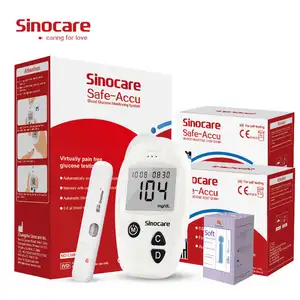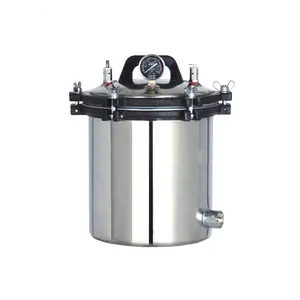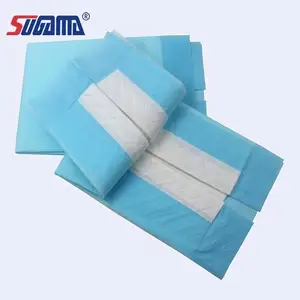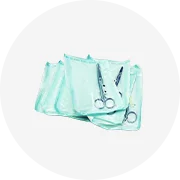Popolare nel tuo settore






Sterile Trasparente Ferita Chirurgica Medicazione cura delle ferite bendaggio adesivo
0,0561 € - 0,1309 €
Ordine minimo: 20000 parti






Prodotti Medico Chirurgico Medicazione della Ferita Set Per La Cura Medico Usa E Getta
0,3598 € - 0,4205 €
Ordine minimo: 1000 pacchetti






Fasciatura idrocolloide traspirante per medicazione idrocolloide di confine fornitore medico
0,0374 € - 0,0561 €
Ordine minimo: 3000 parti







Tampone orale per il campionamento medico Sterile monouso per il campionamento per la vendita per uso orale per Rt Pcr Test della gola tampone spugna
Pronto per la spedizione
0,1589 € - 0,1963 €
Ordine minimo: 10000 parti
Spedizione per pezzo: 2,35 €







Sacchetto autosigillante medico di alta qualità dell'autoclave dell'ospedale di sterilizzazione
0,6354 € - 12,06 €
Ordine minimo: 500 scatole







IV medicazione per ferite adesivi sterili in tessuto Non tessuto/PU con ago a soffitto cerotto per infusione fisso
0,0468 €
Ordine minimo: 1200000 parti






Adesivi per aghi a soffitto cerotti per infusione a iniezione senza pad medicazione per ferite con telaio sterile
1,87 € - 3,28 €
Ordine minimo: 5000 scatole












I produttori forniscono direttamente nastro di carta per infusione nastro non tessuto traspirante facile da strappare nastro sensibile alla bassa pressione
0,0066 € - 0,0113 €
Ordine minimo: 5000 scatole






Film Dressing Medical Infusion Patch ago permanente produttore professionale trasparente PU 100% poliestere EOS 3 anni
0,0748 € - 0,1402 €
Ordine minimo: 100 parti






Medicazione impermeabile medicazione per ferite Film PU traspirante Sterile PICC I.V. Adesivo di fissazione dell'ago a casa per infusione di Cannula
0,1309 € - 0,1402 €
Ordine minimo: 500 parti
Ricerche correlate:
intonaco di trattamento medicopiede in gesso medicofarmaco eczemaintonaco per infusione sterileintonaco trasparente per infusioneintonaci per infusionegesso per infusione medicagesso medico della prostatacorea del sud cerotto medicogesso adesivo per infusionegesso medico chirurgicogesso trasfusionaleprodotto in gesso medicovendita di gesso medicogesso chirurgico medico del capsico



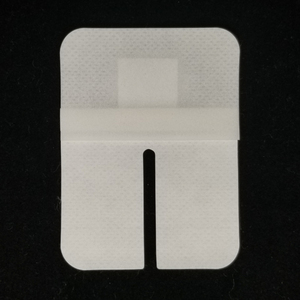


IV medicazione per ferite nastro per infusione fisso Sterile in tessuto Non tessuto o PU
0,0468 €
Ordine minimo: 1200000 parti






CE ISO medico trasparente medicazione delle ferite adesivo impermeabile Sterile I.V. Medicazione medica per cerotto a domicilio per infusione di Cannula
0,0374 € - 0,4672 €
Ordine minimo: 500 parti






IV medicazione per ferite adesivi sterili in tessuto Non tessuto/PU per ago permanente nastro per infusione fisso
0,0468 €
Ordine minimo: 1200000 parti






Medicazione impermeabile medicazione per ferite Film PU traspirante Sterile PICC I.V. Adesivo di fissazione dell'ago a domicilio per infusione di Cannula
0,1309 € - 0,1402 €
Ordine minimo: 500 parti






V Cannula fissazione Paster monouso trasparente impermeabile medicazione IV
0,0655 € - 0,0748 €
Ordine minimo: 1000 parti






Nastro in gesso per infusione medica non tessuto in pizzo filato ad alta permeabilità nastro non tessuto medico di qualsiasi dimensione
0,0468 € - 0,9344 €
Ordine minimo: 10000 rulli






Nastro di fissaggio per tubo per infusione medica Non tessuto nastro adesivo per cerotto per infusione medica nastro fisso per tubo per infusione di fabbrica
Pronto per la spedizione
1,22 € - 1,41 €
Ordine minimo: 16000 parti
Spedizione per pezzo: 0,0094 €






Produttore fornitore medico non tessuto micropori sterile drappo rubinetto adesivo chirurgico
0,1869 € - 0,2336 €
Ordine minimo: 600 rulli






2023 Sterile Non tessuto medicazione per ferite monouso chirurgico medico infusione nastro adesivo in gesso per uso medico
0,2617 € - 0,2804 €
Ordine minimo: 5000 scatole






Spedizione veloce sentymed vendita calda 3M 1624W medicazione impermeabile trasparente/pellicola di fissaggio dell'ago per infusione endovenosa Sterile
17,76 € - 29,90 €
Ordine minimo: 10 scatole






UNIMASTER adesivo Sterile IV Film intonaco nastro impermeabile trasparente medico Iv Cannula
0,0187 € - 0,4672 €
Ordine minimo: 10000 parti






Ospedale medico di alta qualità o clinica utilizzando la medicazione di fissazione della cannula IV con pellicola trasparente
0,1309 € - 0,1402 €
Ordine minimo: 1000 parti






Medicazione sterile Non tessuta per ferite monouso chirurgica per infusione medica adesivo per nastro adesivo per infusione
0,0094 € - 0,2804 €
Ordine minimo: 10000 parti






Macchina imballatrice KC-5-A del gesso dell'iniezione per il gesso di infusione
16.818,32 € - 20.368,86 €
Ordine minimo: 1 insieme






Macchina automatica KC-5-A del bastone di infusione per il gesso di infusione
16.818,32 € - 20.368,86 €
Ordine minimo: 1 insieme






Trasparente adesivo IV catetere fissazione Cannula medicazione con telaio
0,1402 € - 0,1495 €
Ordine minimo: 10000 parti
Migliori categorie
Su intonaco medico sterile per infusione
Cerca una varietà di file. intonaco medico sterile per infusione su Alibaba.com per trovare un'opzione di prezzo che funzioni per te. Fai scorta e tieni una scorta completa a portata di mano per l'uso in un ospedale o in una clinica medica. Trova alta qualità. intonaco medico sterile per infusione per impostare flebo IV che aiuteranno a mantenere i pazienti sani. È disponibile un'ampia gamma di fornitori. Scegline uno che aiuti a garantire la sicurezza sia dei pazienti che del personale.
La maggior parte. Le intonaco medico sterile per infusione sono monouso per mantenere pulita la tua area di lavoro e le altre apparecchiature sterili. Molti tipi sono realizzati senza lattice, rendendoli sicuri per chi soffre di allergie legate al lattice. I set di solito includono uno strumento da piercing e un tubo di iniezione. La plastica trasparente rende facile individuare eventuali ostruzioni nel tubo prima dell'uso. Anche i regolatori di flusso sono inclusi in alcuni tipi.
Fornitori di. intonaco medico sterile per infusione su Alibaba.com offrono opzioni personalizzabili come loghi o imballaggi. Alcuni possono anche fornire piccoli campioni in modo da poter testare un prodotto prima di ordinare ordini più grandi in futuro. I prezzi per gli ordini all'ingrosso sono disponibili con tempi di consegna negoziabili, soprattutto per le grandi spedizioni. Alcuni fornitori ti consentono di scegliere il metodo di trasporto per assicurarti che la tua attrezzatura arrivi in modo sicuro e puntuale. intonaco medico sterile per infusione su Alibaba.com. Sfoglia una selezione di unità per trovare le funzionalità che funzionano meglio per te. Molti. Sono disponibili intonaco medico sterile per infusione per aiutare te e il tuo personale a mantenere i pazienti sani e sicuri durante le varie procedure mediche.
La maggior parte. Le intonaco medico sterile per infusione sono monouso per mantenere pulita la tua area di lavoro e le altre apparecchiature sterili. Molti tipi sono realizzati senza lattice, rendendoli sicuri per chi soffre di allergie legate al lattice. I set di solito includono uno strumento da piercing e un tubo di iniezione. La plastica trasparente rende facile individuare eventuali ostruzioni nel tubo prima dell'uso. Anche i regolatori di flusso sono inclusi in alcuni tipi.
Fornitori di. intonaco medico sterile per infusione su Alibaba.com offrono opzioni personalizzabili come loghi o imballaggi. Alcuni possono anche fornire piccoli campioni in modo da poter testare un prodotto prima di ordinare ordini più grandi in futuro. I prezzi per gli ordini all'ingrosso sono disponibili con tempi di consegna negoziabili, soprattutto per le grandi spedizioni. Alcuni fornitori ti consentono di scegliere il metodo di trasporto per assicurarti che la tua attrezzatura arrivi in modo sicuro e puntuale. intonaco medico sterile per infusione su Alibaba.com. Sfoglia una selezione di unità per trovare le funzionalità che funzionano meglio per te. Molti. Sono disponibili intonaco medico sterile per infusione per aiutare te e il tuo personale a mantenere i pazienti sani e sicuri durante le varie procedure mediche.

